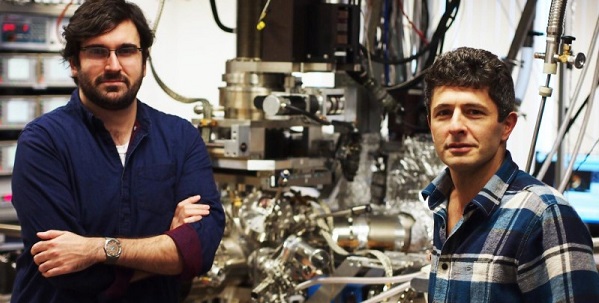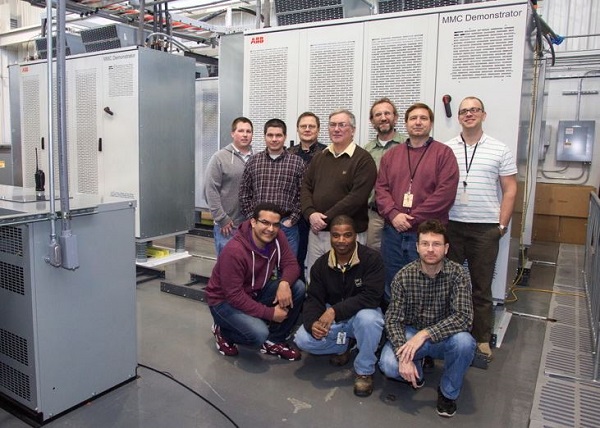University of British Columbia physicists have detected ‘charge ordering’ in electron-doped cuprate superconductors for the first time, according to research published today in Science.
Charge ordering is a ripple-like instability at the electron level that competes with superconductivity and likely suppresses the temperature at which materials demonstrate superconducting properties. Until now, researchers had only observed the phenomenon in other forms of cuprate materials.
 This image depicts Eduardo H. da Silva Neto and Andrea Damascelli at UBC’s Quantum Matter Institute.
This image depicts Eduardo H. da Silva Neto and Andrea Damascelli at UBC’s Quantum Matter Institute.
Credit: University of British Columbia.
“The universality of charge ordering across these very different materials shifts our perspective, and could propel future breakthroughs,” says Eduardo H. da Silva Neto with UBC’s Quantum Matter Institute and the Max-Planck-UBC Centre for Quantum Materials, who led the experiment with researcher Riccardo Comin.
“We need to understand how charge ordering is formed in materials and ideally tune it, allowing superconductivity to occur at temperatures closer to room temperature,” adds da Silva Neto, who is a Canadian Institute for Advanced Research postdoctoral fellow at UBC.
“Our work opens up a new avenue to study charge ordering and the mysteries of superconductivity in these materials,” says UBC professor Andrea Damascelli, leader of the research team. “Now we can compare and contrast characteristics that are common across both flavours of copper-based materials — both hole- and electron-doped.”
Doping involves adding impurities (electrons or ‘holes’) into materials in order to spur the material to exhibit unusual behaviours such as high-temperature superconductivity.
Recent superconductivity research on charge ordering in hole-doped cuprates has focused on understanding its connection to another mysterious state: the pseudogap. Most experiments suggest that the pseudogap is a necessary ingredient to charge ordering, and consequently the suppression of superconducting properties.
But the UBC research indicates that the pseudogap is not a prerequisite for charge ordering in electron-doped materials.
Background
Superconductivity — the phenomenon of electricity flowing with no resistance — occurs in some materials at very low temperatures. High-temperature cuprate superconductors are capable of conducting electricity without resistance at record temperatures, higher than the boiling point of liquid nitrogen. Because of their unrivalled characteristics, they represent the best candidates to advance current superconductor technology, which includes a broad range of applications such as: quantum computers, MRI, high-precision magnetometry, levitating high-speed trains, and lossless power lines.
 CAPS Power Systems Research Group. Photo credit: Bill Lax/Florida State University.
CAPS Power Systems Research Group. Photo credit: Bill Lax/Florida State University.

; ?>wp-content/themes/srptheme/images/Studion.png)